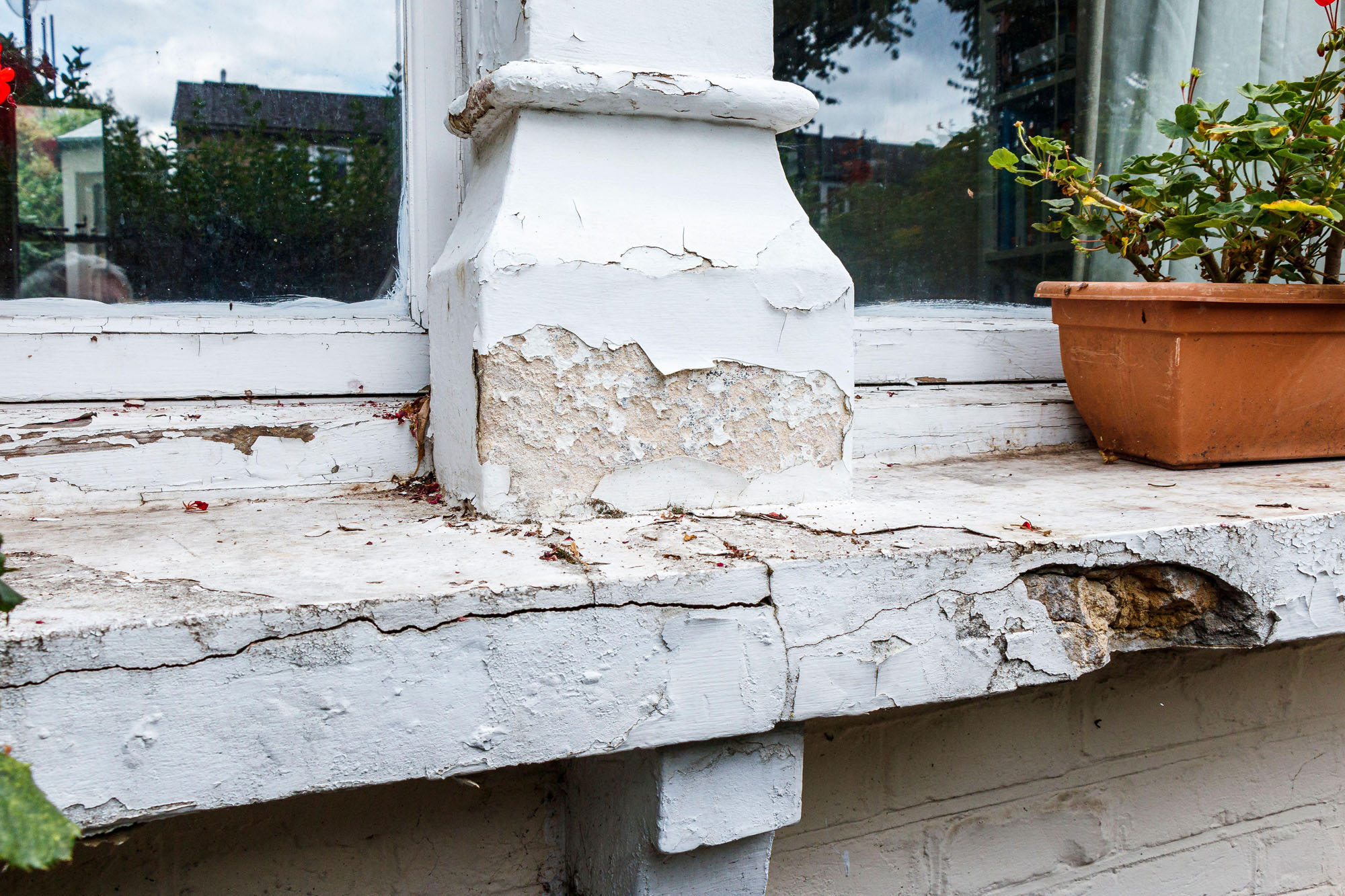Understanding Decay in an Older Home
No two houses are the same but knowing where to look and what to look for will help you spot potential problems of decay before they develop into something more serious.
Common causes of decay
Before you start work on any kind of repair you should always try to find and resolve the cause of the problem, not just the symptoms.
Weather
Weather and its effects are the fundamental cause of decay, leading to problems such as damp, mould, wood-boring insects and fungi. Wood, brick and stone are the three most common building materials, and each of these reacts differently to the effects of weathering and humidity.
Regular maintenance will ensure you catch problems at an early stage, before full-scale repair is needed. If you keep gutters and drains clear of debris, and they are large enough for the rainfall levels predicted, there’s little chance of them overflowing leading to damp walls.
If your walls are damp, there could be further damage from frost and changes in temperature, which could cause bricks to flake or decay. Salts in this moisture can also harm plaster and paint surfaces.
Lack of ventilation
Inadequate ventilation in buildings, their roof spaces or even blocked chimneys, will increase moisture content in the air leading to an increased risk of condensation and mould growth.
Damp will have less chance to dry out if ventilation is inadequate and wood-boring insects and fungi can quickly cause damage. This can not only negatively impact building fabric but also the health of occupants by reducing internal air quality.
Raised ground level
A very common problem with older houses is that external levels can build up over many years. Eventually, they can become higher than the level of the internal floor structure or damp-proof course, if there is one, meaning it will no longer work as intended. Moisture held within the raised ground can then find routes through the walls or floors that were not originally possible.
This can also allow moisture to enter the wall above any damp-proof course that may be original (slate) or a later intervention (plastic or injected). Many historic buildings would not have been built with a damp-proof course and will not benefit from adding one if you can find and resolve the source of excess moisture.
Raised ground levels can also mean that timber suspended ground floors remain constantly damp and begin to decay because there is little or no ventilation.
Earlier repairs or alterations
Alterations can also cause decay. An earlier repair or alteration made using modern impermeable materials, such as cement mortars, may be causing damage by trapping moisture.
It's important to understand the materials your home is made of. A key characteristic of older buildings is the widespread use of 'permeable' materials, which are able to absorb moisture and readily release it again.
Not all causes of decay are obvious
Some problems are more difficult to diagnose than others. Here are some examples.
Tree roots
Both the growth of tree roots and the removal of fully grown trees can damage the shallow foundations of old houses.
Tree roots may sometimes damage the shallow foundations of old houses, particularly in areas of clay soils. Equally, removing fully grown trees in clay soil areas can also cause structural damage through 'ground heave', where the soil expands as it absorbs the extra moisture that the trees used to take up.
Get advice from a building surveyor or structural engineer if you think a nearby tree might be causing problems. You will need to check whether there is a tree preservation order (TPO) in place in any case. If your tree is in a conservation area or has a TPO you will need consent for its removal or lopping/pruning and work should be carried out by a registered tree surgeon. Search the ARB Approved Contractor Directory
Pollution
Atmospheric pollution can produce very acidic rainwater that dissolves limestone and corrodes metal fastenings.
Get professional advice on how to minimise the damage.
Incompatible metals
Copper and lead are incompatible in close proximity, and rainwater washing over copper roof flashings can corrode lead-lined gutters below. You may need to replace the flashings with those made of lead or another compatible material.
This is known as galvanic corrosion and can happen to a number of incompatible metals when they are in contact and water is present.
If the source of the problem remains unclear after you have made your own investigations, get professional advice.
Get the help, advice and permissions you need
-
Where to find specialist help
If the source of the damage remains unclear after you have made your own investigations, or the problem continues, get advice from a building surveyor or other professional with experience of older houses.
-
Check what permissions you may need
If you want to make repairs to your home you may need permission and should seek advice, especially if your home is listed or in a conservation area.
-
Who do I contact?
This page describes the key points of contact and sources of advice if you are thinking of making changes to your home.





